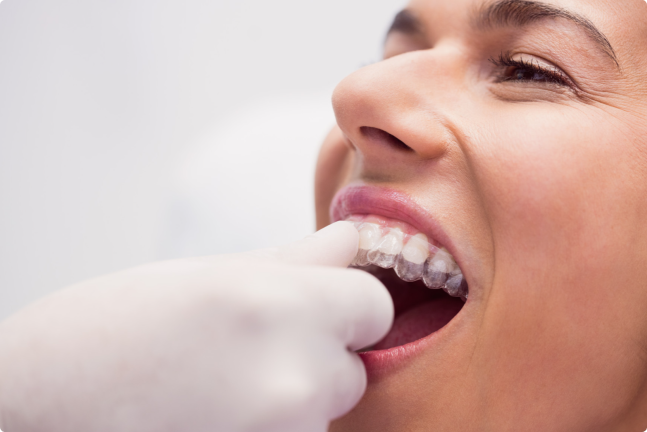
If you’re considering Invisalign to straighten your teeth, one of the first questions on your mind is likely, “How long will it take?” It’s a valid concern—after all, the idea of achieving a confident, straighter smile without the hassle of traditional braces is appealing. But the timeline of Invisalign treatment isn’t the same for everyone. It depends on a variety of personal factors, from the complexity of your case to how consistently you wear your aligners.
This guide dives into the key factors that influence the duration of your Invisalign Braces Treatment Cost in Dubai, what to expect during treatment, and how to get the best results as efficiently as possible.
Understanding the Invisalign Process
Invisalign uses a series of clear aligners to gradually shift your teeth into better alignment. These aligners are custom-made using advanced 3D imaging technology. Patients typically receive new sets every one to two weeks, with each set designed to make small, calculated adjustments to the positioning of the teeth.
The average Invisalign treatment lasts between 6 and 18 months, but the timeline can vary widely depending on your unique dental needs and habits.
1. Severity of Your Dental Misalignment
The complexity of your dental issues plays a major role in how long Invisalign treatment takes. Minor crowding or spacing can often be corrected in a few months. However, more serious problems such as overbites, underbites, crossbites, or rotated teeth may require a longer treatment plan.
The more your teeth need to move, the longer your journey will be. For moderate to severe cases, additional tools like attachments or elastics may also be necessary, adding to the overall duration.
2. Age and Tooth Movement
Younger patients often experience faster results because their jaws and teeth are still developing, making them more responsive to orthodontic pressure. Adults, while still great candidates for Invisalign, may find that their teeth move at a slower pace.
That said, age doesn’t disqualify anyone. With consistent aligner wear and proper care, adults can still achieve excellent results.
3. Adherence to Aligner Wear Guidelines
Invisalign works best when the aligners are worn for at least 20 to 22 hours per day. Removing them for extended periods can significantly delay progress.
Forgetting to wear them consistently—or not following your dentist’s instructions—can lead to setbacks and the need to redo aligners, which stretches the timeline. Discipline is key if you want to stay on track.
4. Frequency of Dental Check-ins
Regular dental visits help monitor your progress and ensure everything is moving as expected. Skipping check-ups or delaying appointments can result in unnoticed issues, which may require longer treatment.
During these appointments, your provider may make adjustments, offer refinements, or modify your plan to optimize results. Keeping your schedule ensures your treatment continues smoothly.
5. Use of Attachments or Refinements
Attachments are small, tooth-colored bumps that help the aligners grip teeth better and make more complex movements possible. Some patients may require refinements, which are additional aligners added toward the end of treatment to perfect the final outcome.
While these tools are incredibly helpful for achieving optimal alignment, they can also add a few weeks or months to the process, depending on your response.
6. Oral Hygiene and Dental Health
Good oral hygiene supports smooth progress. Issues such as cavities, gum disease, or other oral health problems can interrupt Invisalign treatment until they’re resolved. Maintaining healthy teeth and gums ensures that there are no disruptions that could lengthen your treatment time.
Brushing after meals, flossing daily, and cleaning your aligners as recommended all contribute to staying on schedule.
7. Compliance with Dietary Guidelines
Although Invisalign aligners are removable, they must be taken out for eating and drinking anything other than water. If aligners are worn during meals or cleaned improperly afterward, it can lead to damage or staining.
Protecting your aligners keeps your treatment on track. Avoid sugary or acidic drinks while wearing them and rinse your mouth before reinserting to maintain a hygienic environment.
8. Technology and Personalized Planning
Invisalign uses advanced digital scanning and AI-powered treatment planning. The more customized your treatment plan, the more accurate and efficient the aligner sets can be. High-quality imaging and planning reduce the need for corrections and unnecessary delays.
Providers with advanced planning tools can map out the treatment in precise detail, improving both timing and results.
Post-Treatment Care: Retainers and Results
Once your Invisalign journey is complete, you’ll likely need to wear retainers. This step is crucial for maintaining your new smile. Retainers help your teeth settle into their new positions and prevent them from shifting back.
Initially, retainers may need to be worn full-time before transitioning to nighttime use. Staying consistent during this phase ensures that your results last a lifetime.
Benefits of Invisalign Beyond Speed
While the Invisalign Cost Dubai, the benefits of Invisalign extend beyond time. Clear aligners are discreet, comfortable, and removable, making them a flexible option for many lifestyles. They also eliminate the discomfort and aesthetic concerns of metal braces while still delivering impressive results.
Invisalign also offers:
Improved oral hygiene compared to braces
Fewer in-office visits
Enhanced confidence throughout treatment
No dietary restrictions
Conclusion
There is no one-size-fits-all answer to how long Invisalign will take. The timeline depends on your specific needs, how well you follow the guidelines, and how your teeth respond to the aligners. By staying committed, attending regular check-ups, and following expert advice, you can help ensure a smoother, quicker treatment journey.